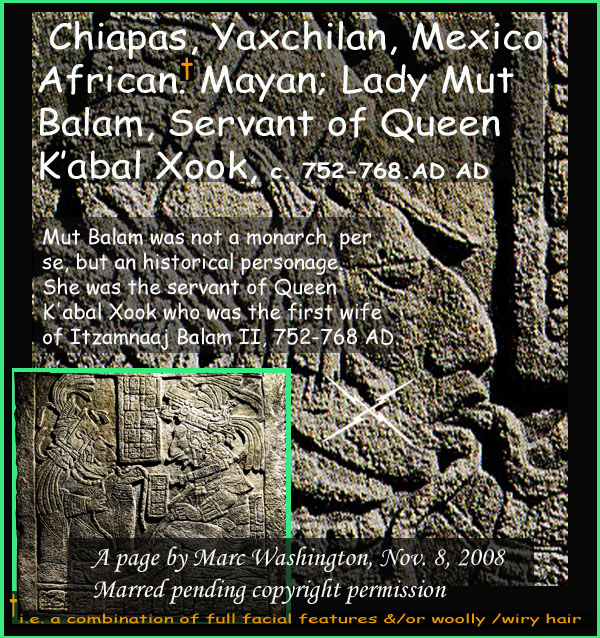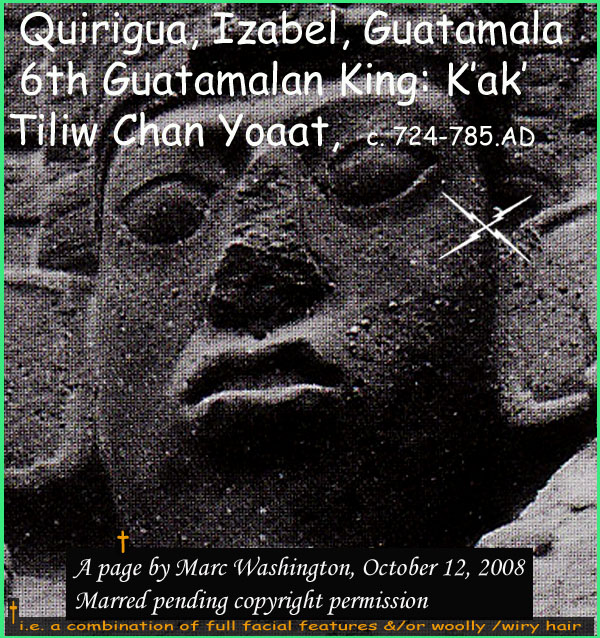Hello E.P. In reply to my question about examples of unconvincing elements in my argument, you wrote
"the problem was your use of an image instead of text, which made this difficult."
I defined a person who is African (ignoring color; color aside) as someone with full facial features given to woolly or wiry hair." Granted the definition is terse. I go into quite a bit more detail on that definition on the page this link opens to:
http://www.beforebc.de/
You have said my argument lacked text. E.P. My argument does not have text? Many times when I see arguments presented showing affinities between two peoples, sometimes Science, Nature, or the other journals will present just one or two features in common; discuss these; and upon conclusion affirm that as they showed these one or two features to indeed be related, that their theory has been proven. These are peer-reviewed journals and no one says much about the process.
Here is an example. Science wrote that as the Dmaninisi of Georgia from 1.8 million years ago shared skulls that had affinity with Nariokotome Boy of Kenya from the same epoch; and that because Oldowan tools were produced by the Dmanisi people, that this was clear evidence of the first Out-of-Africa movement.
This sparse evidence, this scarcity of evidence was enough to convince scientists of international renown - one Israeli teaching at Harvard. Here's the response:
‘They look African,’ says archaeologist Ofer Bar-Yosef of Harvard University, who has visited Dmanisi several times. ‘I would give [Dmanisi] the credence of being the oldest known site in Eurasia with Oldowan stone tools.’ … Enthused University of Rome paleoanthropologist Giorgio Manzi claimed: ‘This is the missing link between Africa, Europe, and Asia!’
I'd give more examples but most articles of Science and Nature in any issue follow that simple template so examples are legion and the point is easy to verify by anyone interested to pick up any issue.
Conversely, I present not one or two analogies but over 35 here
http://www.beforebc.de/all_america/900_ ... archs.html
as in some bullets I have not one but three or even four analogies.
Is that not right?
Furthermore, these analogies (facts) contain a synergy and are syncretic as the sum is greater than the parts. With each additional pair of analogies, I'd say that the affinities increase not exponentially but by a value greater than one making the likelihood of affinity more-and-more not due to chance for two civilizations that co-existed in near proximity at the same ancient epoch. The greater the number of analogies, commonly shared facts, the greater those similarities were not due to chance.
And there is a synergy as well as the examples are multidisciplinary. Here is that Peter Underhill of Stanford wrote in encouraging that broader net be used by scientists to prove their points. Underhill writes:
"You have to look at genetics, material culture (archeological findings), linguistics and other areas to find different lines of evidence that reinforce each other." IN: Overlapping Genetic And Archaeological Evidence Suggests Neolithic Migration, Science Daily, Stanford University Medical Center, Issue of 11 Sep. 2002.
Where genetic evidence comes into play, I wonder how much was lost where the Spanish dispensed with those holders of land, gold, and real estate they preferred be under their own domain. Sadly, the numbers were legion.
In candor, I admit that my evidence is none the less, lacking in linguistics and genetics. As the years goes by, I'd like, to address these: but, where genetics is concerned, I did say that it was reported that some claim that Peruvian coffee and trace remains found in 18th dynasty Egypt were said to be the same. I asked for someone from Archaeologica to affirm or disprove that.
In closing, though I can respect your opinion, I'd say the strength of my argument lies in archeological and cultural anthropological cross-similarities.
I hold an open mind, though. I welcome your thoughts and those of anyone else on the matter.





